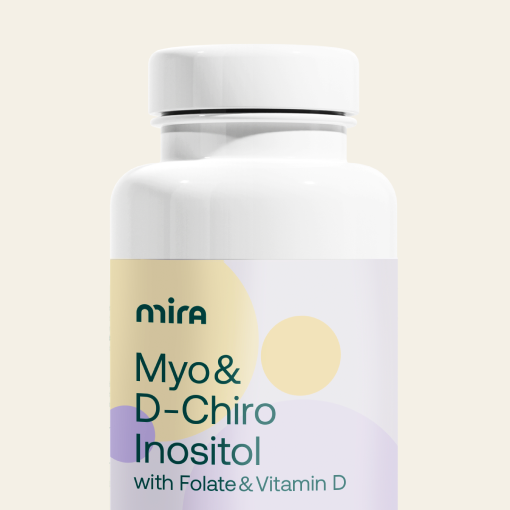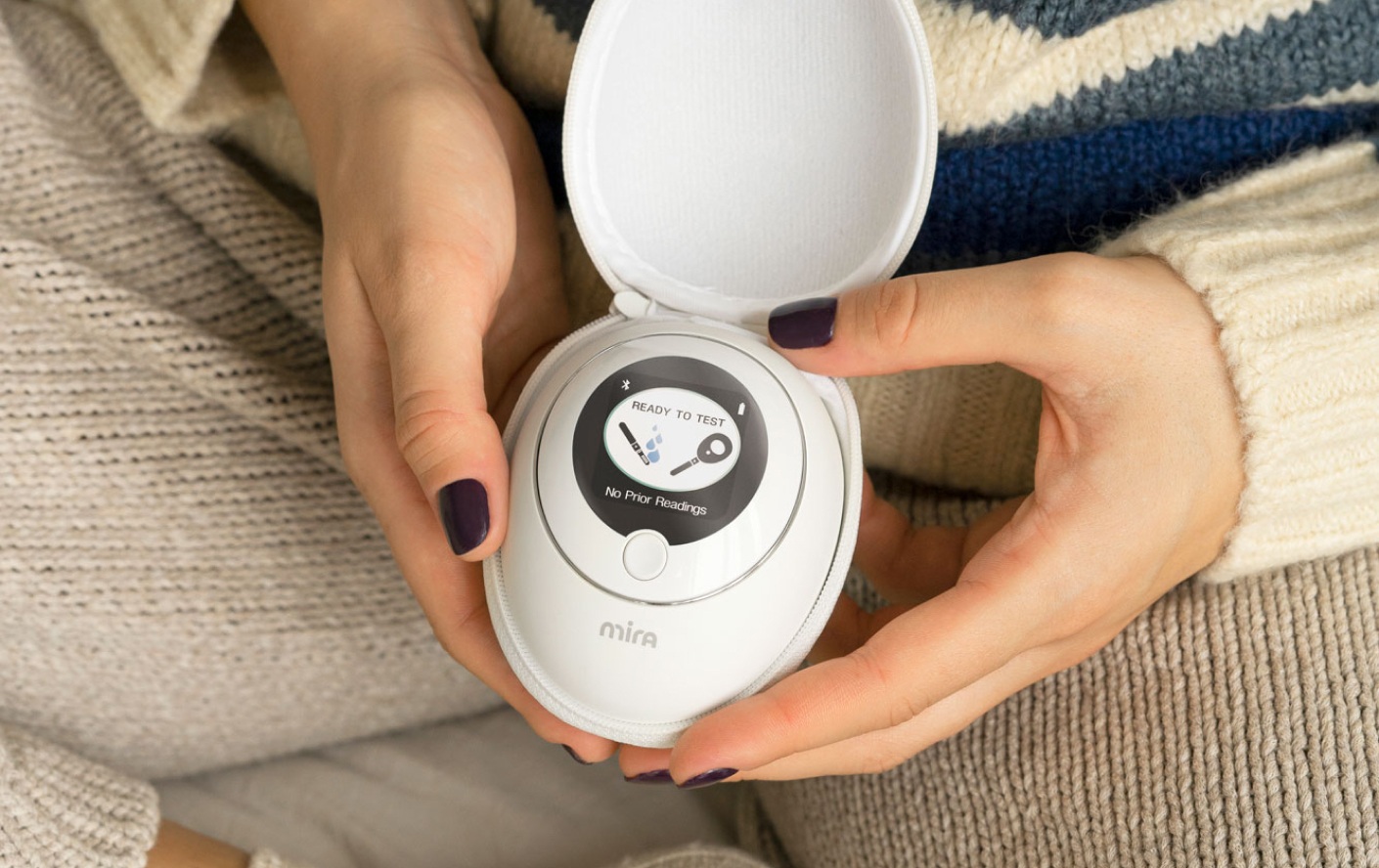A Complete Guide to Testing with Mira Fertility
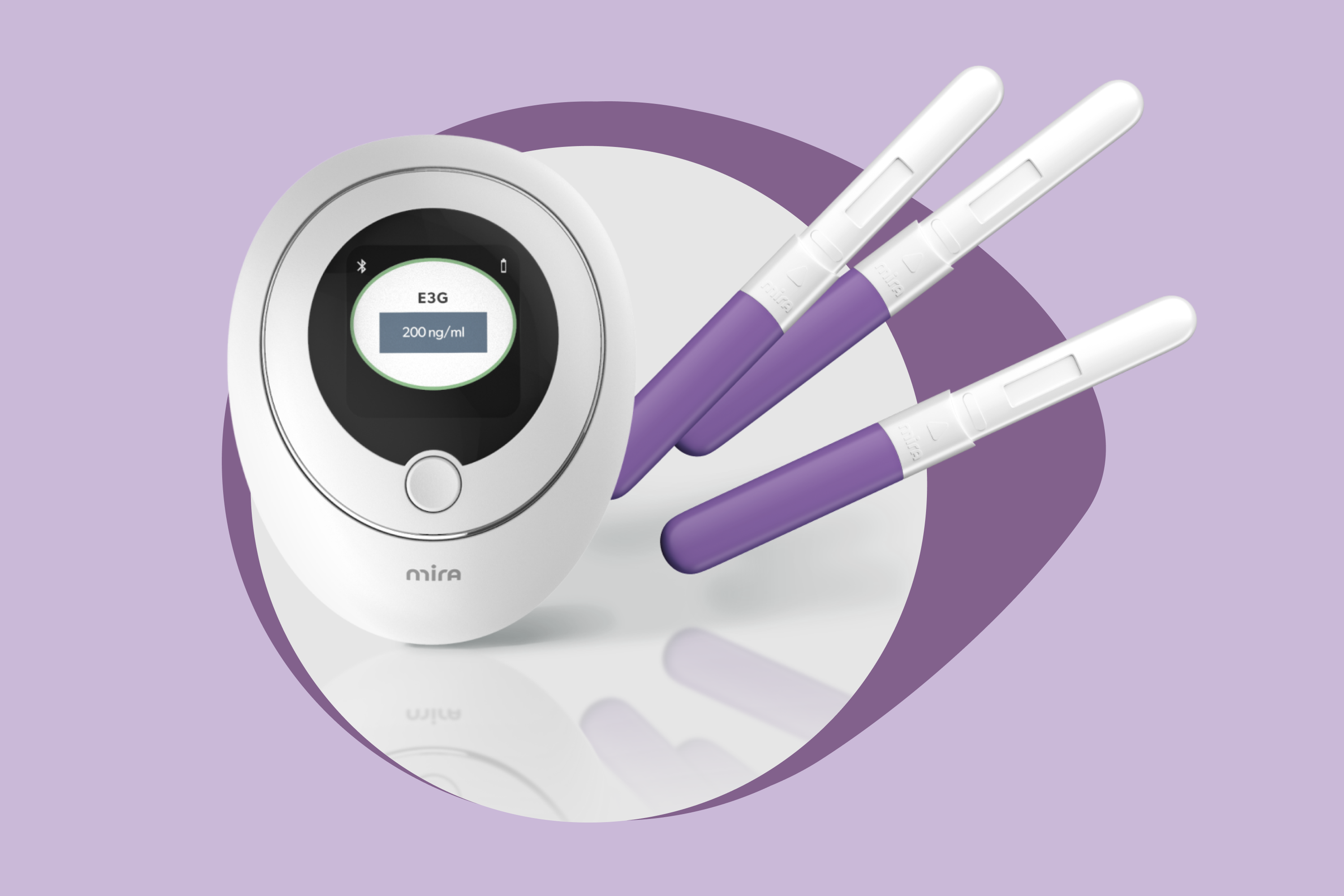
Ready to learn everything you need to know about what it’s like to plan a pregnancy with Mira? We’ve got you covered!
In this guide, you’ll learn:
- What to expect when you receive your first Mira Analyzer box
- How to start testing with Mira
- How to interpret your results
- Troubleshooting tips and tricks
Let’s go!
What is Mira?
Mira is a comprehensive women’s health monitoring platform, designed to predict ovulation and estimate an individual’s fertile window with 99% accuracy. This is done by testing and tracking key fertility hormones in urine.
Currently, Mira can test the following fertility hormones: Luteinizing Hormone (LH), Estrone-3-Glucuronide (E3G), Pregnanediol-3-Glucuronide (PdG), and Follicle Stimulating Hormone (FSH).
Unboxing Mira
What you’ll find in the Mira Analyzer box
When you order your first Mira Analyzer box, you can expect to receive:
- Mira Analyzer
- Deluxe Mira Carrying Pouch
- Charging Cable
- 1 Silicone Cup (to collect urine for testing)
- Quickstart Guide: Step-by-step instructions to get started with Mira
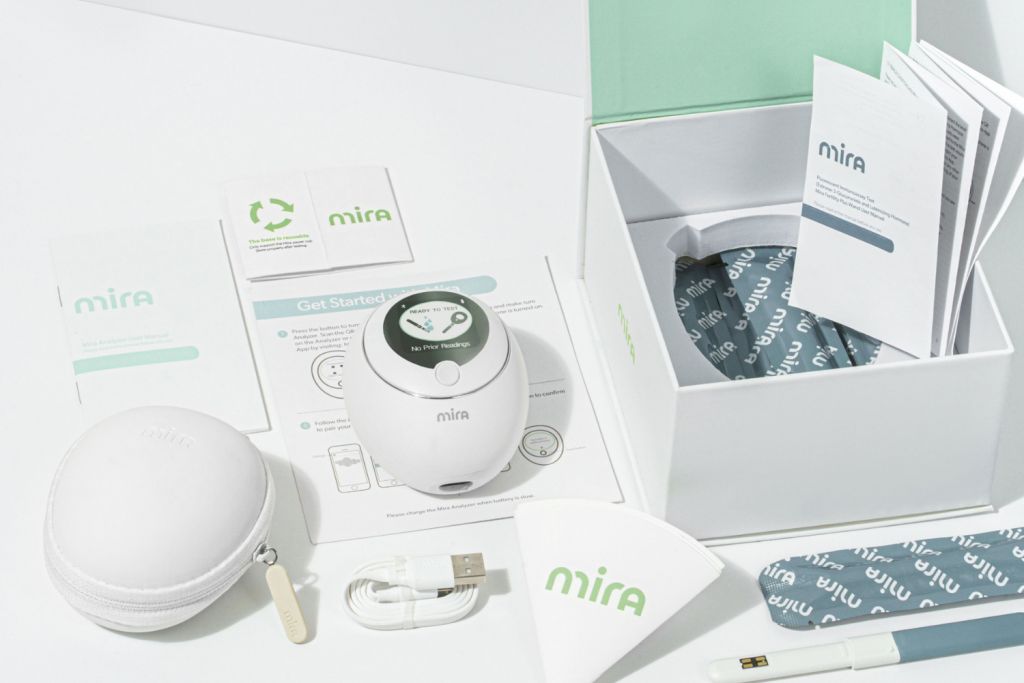
If you haven’t purchased your Mira Kit yet, you can do so by visiting the Mira shop.
Which wands should I choose?
The Mira Analyzer can track the following fertility hormones:
- LH – to predict ovulation
- E3G – to identify your full 6-day fertile window
- PdG – to confirm ovulation happened during a specific cycle
- FSH – to check your fertility status
However, only certain wands can be used to test certain hormones. Here’s a quick overview of the types of wands that we offer and what they test:
- Fertility Wands: LH
- Fertility Plus Wands: LH, E3G
- Fertility Confirm Wands: PdG
- Fertility MAX Wands: LH, E3G, PdG
- Ovum Wands: FSH
The type of wands you choose will depend on your personal fertility goals. If you’re not quite sure which wands to start with, here is a helpful guide that can help you assess your situation and make the best decision.
When you’re ready to purchase your Mira Wands, you can find them in the Mira shop here.
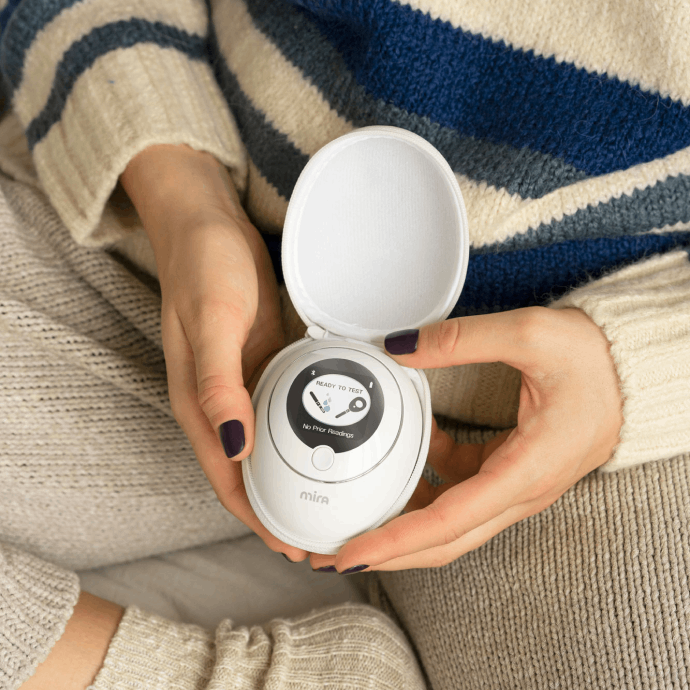
Before you Test with Mira
Setting Up
The very first thing you should do is download the Mira App (available on the App Store or Google Play). We recommend doing this right after ordering your Starter Kit so that you are ready to go when it arrives.
Once downloaded, you can then create your personal account and fill in your personal information like period dates and fertility goals. You can also take this time to get familiarized with the look of the calendar screen.
Bonus tip: when setting up your account, don’t forget to allow notifications from the Mira App so that you always receive reminders about testing days.
When should I start testing
The Mira App shows green or grey dots on the calendar screen on days that you need to test. Depending on your cycle length, testing can be done every day after your period or in 2-3 days. If your Mira arrives toward the end of your cycle, simply start testing starting from the next one. Make sure you stock up on wands ahead of time too!
In terms of the best time of day to test, we recommend testing with first morning urine (FMU) for the most accurate results. If testing with FMU is does not apply to your lifestyle, you can test anytime as long as you avoid drinking any liquid for at least 2 hours before testing. This is because the amount of liquid intake can give a negative impact on the test results.
Note: If you get a positive ovulation reading in the morning, test again within the next 6 hours to be absolutely sure. Remember, hormonal surges often occur throughout the day. After a positive result, ovulation commonly occurs within the next 48 hours.
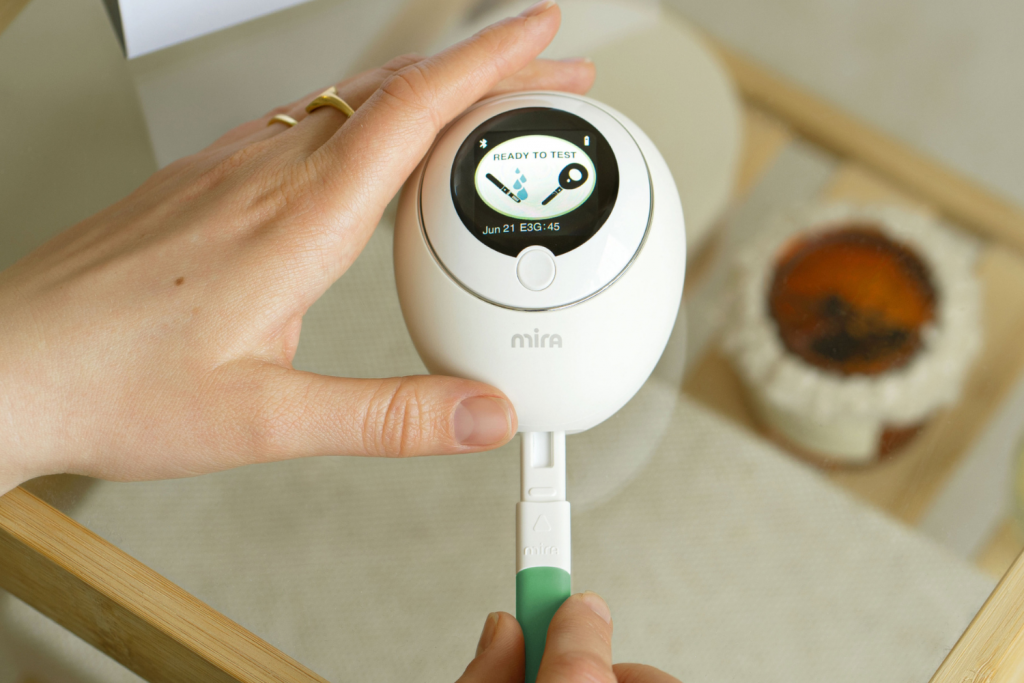
How many wands do I need for one cycle?
You usually need 10-20 wands per cycle, depending on your cycle length. The app dynamically calculates when you need to test and reminds you about the testing days. Mira’s smart algorithm saves you money and effort by learning your cycle and only asking you to test when it is truly needed.
As time passes, Mira will learn about your cycle and remind you about your testing days.
How many cycles should I test with Mira?
The number of cycles you will need to test with Mira depends on your individual circumstances and fertility goals. For example, if your goal is to get pregnant, you may only need Mira for one cycle!
This isn’t always the case though, and according to our data, 77% of Mira users who were actively trying to conceive (TTC) conceived during the first 3 cycles. 53% of Mira users with PCOS got pregnant within 1 year. To compare, the accuracy rate for the classic calendar method (without Mira) is only an estimated 29%.
This is all thanks to Mira’s AI technology which learns more and more about your hormonal patterns, giving you more accurate and personalized predictions with each test.
How to Test with Mira
How to connect your Analyzer
To connect your Mira Analyzer to your App, start by following the instructions on the App to begin the pairing process. While pairing, make sure your Analyzer screen is on. It may take several attempts to complete the first pairing.
If you’re having issues, try again in another room or in a more isolated area of your home – too many Bluetooth devices may be competing for the signal.
After tapping on “Connect Mira Analyzer”, wait up to 15-20 seconds to connect. In the meantime, keep an eye on your Analyzer for any error messages.
On some phones, the Bluetooth signal will vary depending on direction and distance. If you are struggling to connect, try putting your phone on top, below, or within different distances around the Analyzer while pairing. If you have a Samsung phone, we recommend turning on “Location” when pairing.
If you have a connection issue, restart your phone and the Analyzer. You can also push the “reset” pinhole on the back of the Mira Analyzer and try again.
Testing Instruction
Testing with Mira is simple! Watch this video for step-by-step instructions.
8 short tips about good testing habits
Now that you’ve got the basics, here are eight short tips to help you establish good testing habits:
- Always test with a fresh urine sample, at the same time of one day during the cycle. Use it immediately after collecting it as hormones degrade very quickly. Don’t wait! This could alter your test results.
- Important: the requirement for liquid dipping is above three squares and below the MAX line. If you directly drop the dipstick into the urine cup or hold the test strip too high so that the urine does not exceed the distance of three squares, it will result in insufficient urine volume, leading to incomplete test runs.
- Leave the test wand in the urine sample for 20 seconds. If you remove the strip in less than 20 seconds, this will result in insufficient urine volume, leading to incomplete test runs.
- After sampling the urine, do not shake the test wand.
- Keep the sampling end of the wand pointing down at all times, even after you sampled the urine.
- Do not lift the sampling end higher than the reading end of the wand when reversing the cap.
- Insert the test wand immediately into the Analyzer after sampling.
- Important: If, after dipping, you try to locate the analyzer’s insertion port and you end up inserting the test strip upside down, it can cause the urine to flow backward, leading to incomplete test runs.
- Keep the Analyzer on a flat and horizontal surface as you insert the test wand. Do not move or tilt the Analyzer during the 16-minute countdown.
- Once the reading is complete, the test wand cannot be reused. After getting your results, don’t leave the tested wand in the analyzer. The Analyzer will show an old test result if a used wand is re-inserted.
How to read Mira charts
Understanding your Mira test results chart is easy, but at first it might look overwhelming.
Here is what to look for when reading your results:
- E3G peaks 1-3 days before your LH peak – after which ovulation happens within 10-12 hours.
- Your E3G may fluctuate during the follicular phase, meaning you might notice small peaks of E3G before the main one as you approach ovulation.
- Your ovulation is confirmed by the rise of PdG 1-2 days after your LH peak.
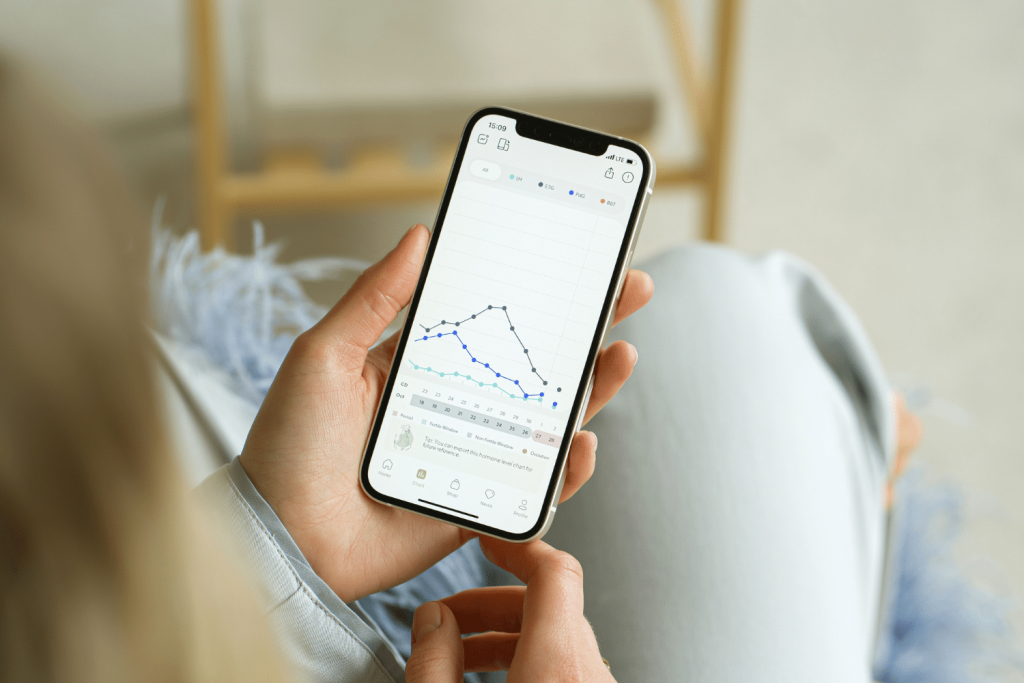
Your Fertility Score
In your Mira App, you will also receive a number called your Fertility Score. Its purpose is to help you understand how fertile you are during a cycle so that you can plan intercourse accordingly. Here is what your fertility score means:
| Fertility Scores | Ovulation Status | Fertility Status | Chance of conception |
| 1-4 | Non-ovulatory days | Non-fertile window | Unlikely, but not impossible. The chances of pregnancy after intercourse/fertility treatments are low. |
| 5-8 | 3 days before or 2 days after ovulation | Fertile window | Intercourse/fertility treatments can lead to pregnancy. |
| 9-10 | Ovulation is likely to happen within 24 hours | Most fertile days | Intercourse/fertility treatments during the next 24-48 hours have the highest chance of pregnancy during a cycle. |
When looking at your charts and fertility score, it’s important to keep the following two tips in mind:
- Remember to focus on your overall trend, instead of the numerical values over time. As Mira learns about your hormone levels and overall fertility health, it will create a trend. This way, you will learn exactly when you are ovulating.
- Your hormone levels can fluctuate, it’s normal. If you’re seeing some odd numbers, don’t be alarmed. Hormone levels vary depending on the person and cycle.
FAQ about Charts Reading
What if my chart doesn’t look like the example charts?
It’s completely ok! Everybody’s hormone patterns are unique. The good news is that Mira’s AI algorithm has been trained and optimized on 4M+ hormone data points and 370K+ menstrual cycles. So even if your chart doesn’t look “regular,” you’re still getting personalized results.
You can explore more chart examples here.
Are my hormone levels fluctuating too much?
Again, don’t be alarmed if you see some strange numbers. Our bodies and cycles are unique, and hormone levels can vary from person to person and even cycle to cycle.
In fact, one study proved that there is no linear rise of urinary E3G, instead, E3G oscillates within a wide range of concentrations throughout the follicular phase, with a frequency of approximately 2 days.
The trend or your “hormone curve” is more important than the value of a single test.
Tracking & reading each hormone
E3G levels
What is E3G?
E3G is a metabolite of estradiol (E2), a type of estrogen found in urine. Its primary role is to help stimulate a surge in luteinizing hormone (LH), which triggers ovulation.
E3G levels rise approximately 1-3 days before an LH surge. Its rise often overlaps with the start of the fertile window. After ovulation, E3G levels will drop. However, there will be another small surge in E3G in the middle of the luteal phase. This is a sign that your body is entering the non-fertile period.
What is a normal E3G range?
Our E3G level fluctuates from woman to woman and cycle to cycle. Generally, it will be around 10-100 ng/ml during the follicular phase and rise to 100-640+ ng/ml when close to ovulation. Because of the self-regulating effect of estrogen, the rise of E3G when close to ovulation is fluctuating.
What is the difference between E2 and E3G?
E2 (estradiol) is found in your blood, and its metabolized product is E3G (estrone-3-glucuronide) which is found in urine. It’s important to note that they do not share the same unit of measurement; the unit for E3G is ng/ml, whereas the unit for E2 is pg/ml.
While E3G and E2 are different, they do share the same fluctuation patterns. This is why we can measure E3G in urine to track estradiol fluctuations.
LH levels
What is LH?
Luteinizing hormone (LH) is a key fertility hormone that controls the functions of the ovaries. Midway through the cycle, LH levels surge dramatically in order to trigger ovulation. Ovulation typically occurs within 24-36 hours of an LH surge.
What is a normal LH range?
When testing with Mira, LH levels can range anywhere between 0 to 30+ MIU/mL. Although individual measurements can vary, a typical LH surge will measure at 14+ MIU/mL.
If my LH surge is low, does that indicate weak ovulation?
Not necessarily. Hormones fluctuate depending on the person and cycle. Always keep in mind: the overall trend is more important than the absolute value of a single test. When you ovulate, you should see a sudden increase in LH concentrations, although the peak value and pattern can vary greatly. This means you may not have to necessarily reach “high” to ovulate.
Is there a possibility that even though LH surges, there is no ovulation?
In most cases, people ovulate when there is an LH surge. Very rarely, some may have an anovulatory cycle, meaning the absence of ovulation. Nevertheless, your LH will still surge, as your ovary is “trying” to make it work, but for some reason, the egg cannot break out from the ovary and it is not released. This happens rarely but is found more frequently in people with PCOS.
I see a surge in the morning and it disappears in the afternoon, why?
LH tends to increase and decrease very sharply. An entire surge can disappear within 12-36 hours. So, it is very normal to see a surge in the morning and have it disappear that same afternoon or the next day. Once you see the surge, you will ovulate in 24-36 hours – this marks the best timing for TTC or TTA.
I have two luteinizing hormones (LH) peaks, does that mean I ovulate twice in one cycle?
According to recent studies, there are three types of gradual onset (2-6 days) of LH surge. Some of them lead to multiple positive ovulation test results for more than one day. This is why Mira Fertility Tracker is better than over-the-counter ovulation tracking kits. Mira allows you to see your curve and recognize the highest peak based on the quantitative LH level.
PdG levels
What is PdG?
Pregnanediol glucuronide (PdG) is a urine metabolite of ovarian progesterone. It is produced in the corpus luteum in the ovaries after ovulation occurs. One of the biggest signs that ovulation has occurred is a rapid and consistent rise in PdG levels.
What is a normal PdG range?
When testing with Mira, PdG levels are typically around 5ug/ml during the follicular phase. After ovulation, PdG levels can be anywhere between 2.5 to 25ug/m. Due to the self-regulating nature of progesterone, the rise of PdG after ovulation can fluctuate.
Does a rise in PdG indicate ovulation?
Yes. If you see a rapid surge of PdG, it means that ovulation has occurred. Anything higher than 5ug/ml is commonly associated with ovulation. However, the best way to confirm ovulation is to monitor your overall PdG patterns instead of focusing on the exact numbers.
When does PdG peak?
If conception does not occur, PdG tends to peak around 6-8 days post-ovulation. A peak indicates that the corpus luteum (the temporary gland formed in the ovaries after successful ovulation) will soon disintegrate. PdG levels will then decrease and your next period will start.
Could I detect pregnancy with PdG?
If conception does occur, PdG levels will continue to rise in order to maintain a healthy pregnancy. They will not decline after peaking, and levels will rise beyond what is detectable by Mira wands.
Could the level of PdG increase without ovulation?
A very slight increase of PdG may be noticed in some cases 2-3 days before ovulation, but it doesn’t mean that ovulation will definitely happen.
FSH Levels
What is FSH?
FSH, known as the follicle-stimulating hormone, is a pituitary hormone that stimulates the recruitment, growth, and development of ovarian follicles. FSH is commonly used in medical practice to assess ovarian function and confirm menopause.
What is a normal FSH range?
FSH levels vary depending on the person! Generally, your FSH levels will be at <10mIU/ml during your non-fertile phase; this number will increase during the beginning of your LH surge and increase progressively to its peak on your ovulation day. On this day, FSH levels will increase to 30mIU/ml or higher.
The range of detection for Mira Wands is 1-200 mIU/ml.
What does a high level of FSH mean?
Continuously high levels of FSH (>30mIU/ml) indicate that an individual is approaching menopause. If FSH consistently measures above 10mIU/ml on day three of a cycle, it may be a sign of diminished ovarian reserve.
When should I test for FSH?
For regular cycles, we recommend testing with Mira Ovum Wands on cycle day 3 and repeating the test every 3-5 days for at least 2 cycles.
For irregular cycles, we recommend testing on any day of the cycle for 5-7 days at the same time for at least 2 months.
How many FSH surges occur during the menstrual cycle?
There are typically 3 FSH surges within the menstrual cycle. The first one is at the beginning of the cycle (typically on day 3 of the cycle) to stimulate follicles to grow, the second one occurs around ovulation along with LH peak to trigger ovulation, and the third one occurs 2-3 days before the menstrual period to stimulate follicle growth in the next cycle.
Can a surge in FSH help to predict ovulation?
Yes. According to one study, the second FSH peak occurs on average 2 hours before ovulation.
Combining different types of wands during one cycle
We do not recommend using two different kinds of wands to track the same hormones during one cycle.
For example, during one cycle:
- You can combine Fertility Plus (E3G, LH) and Fertility Confirm Wands (PdG).
- But you shouldn’t combine Fertility Plus (E3G, LH) and Fertility Max Wands (E3G, LH, PdG).
Why? Shouldn’t all Mira Wands show the same numeric result?
Each wand is calibrated uniquely to analyze specific hormone combinations. So, while you will still get the same lab-grade accuracy with all of our Wands—each Wand will show results differently.
Here’s how it works:
Let’s imagine you’re going to a lab to test your urine. If you were to send the same urine sample to 2 or 3 different labs, you’d notice that your results vary slightly. This doesn’t mean one lab is more accurate than the other—or that a specific lab is giving you incorrect results.
The varying results you will see are due to the fluctuations in all bioassays. The variations in lab results can be due to operations, tech calibration, time, etc.
With this in mind, imagine every type of Mira Wand as its own unique lab. If you started testing LH, E3G, and PdG at the “Mira Max Wands” lab from the beginning of your cycle, you would want to keep going to this lab throughout your entire cycle to see the same type of results.
What happens if you DO test with different wands? Will this affect your ovulation tracking?
In general, no. Each Wand is manufactured and controlled based on industry standards and regulations and meets the requirements for testing purposes. As long as the fluctuations in values you see are within the fluctuation range, rest assured that you got an accurate result.
You may get 64 ng/ml from one wand and 76 ng/ml from another. Does this mean you’re getting accurate ovulation prediction results? Yes!
But to avoid confusing results, we highly recommend using one type of Wand to get equally calibrated results throughout your entire cycle.
Troubleshooting your Mira
I am having a syncing issue, how do I fix it?
This situation is very rare. Try re-entering your period on the app or reset the Analyzer using a pin. If the issue persists, please reach out to support@miracare.com and we will be happy to help!
Why are pages on the new app not loading?
This could be a connectivity issue. Try to use a different network, close, and reopen the app. If your internet connection is poor, you’ll need to troubleshoot your internet connection.
Why can’t I turn on my analyzer?
Try resetting the analyzer using a pin and re-charging it. If the issue persists, kindly reach out with photos and videos to support@miracare.com. We are happy to help.
Final Thoughts
We hope this information has been enlightening for your fertility goals! If you’re in need of more insights regarding your data, results, and hormone levels, feel free to send an email to support@miracare.com or check out our FAQ! We are happy to help 💚
Mira’s Editorial Process
All content produced by Mira meets stringent editorial standards, ensuring excellence and accuracy in language and medical precision. Every piece undergoes thorough fact-checking and review by qualified professionals. Check out our full editorial process to learn more.


